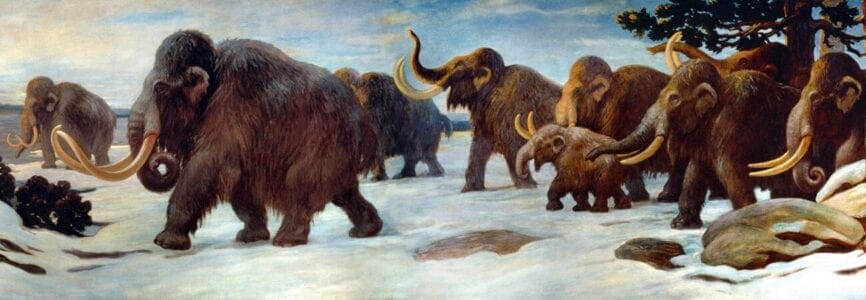“De-Extinction”: Restoring Nature?
Principal Investigators: Gregory Kaebnick and Bruce Jennings
Funder: Gaylin Fund and private donors
Some scientists and conservationists believe that recently extinct species can sometimes be “brought back”—recreated through a mix of genetic and reproductive technologies and breeding and then reintroduced into the wild. Work is under way, for example, to try to recreate the woolly mammoth by modifying an African or Asian elephant genome so that it resembles the mammoth genome, using cloning techniques to produce a fetus, and then bringing the fetus to term either in a living elephant or in an artificial womb. Other candidates range from the aurochs (ancestor of today’s cattle) to the passenger pigeon (which formed billion-member flocks in the nineteenth century), the gastric-brooding frog (which turns its stomach into a uterus to bring its progeny into the world), to the bucardo (a subspecies of the Iberian ibex). Humans are probably partly to blame for the demise of these creatures; should humans “bring them back”?
In 2015, The Hastings Center launched a project in collaboration with the Center for Humans and Nature on a project to examine the rationale for de-extinction. The project’s overarching questions: Is “bringing back” an extinct species possible? And what are the implications for environmental conservation? Does de-extinction show how biotechnology can be put to use to protect and preserve nature? Or would it undercut efforts to protect and preserve nature? Could it change the meaning of “nature”? Participants in the project included proponents and critics of de-extinction.
Selected Products:
- “Recreating the Wild: De-Extinction, Technology, and the Ethics of Conservation,” a Hastings Center special report
- The Perils of De-Extinction, a set of short essays hosted by the Center for Humans and Nature
- Isaac Asimov debate, moderated by Neil deGrasse Tyson at the American Museum of Natural History
- “What Should Be the Guiding Ideals of Conservation in the Age of Biotechnology?” a public event at The Hastings Center
- “Fix the Planet, or Change the Creatures In It?” Bioethics Forum
- “Digging Deep into De-extinction,” interview on The Revelator
- “Challenging Evolution?” Center for Humans and Nature
